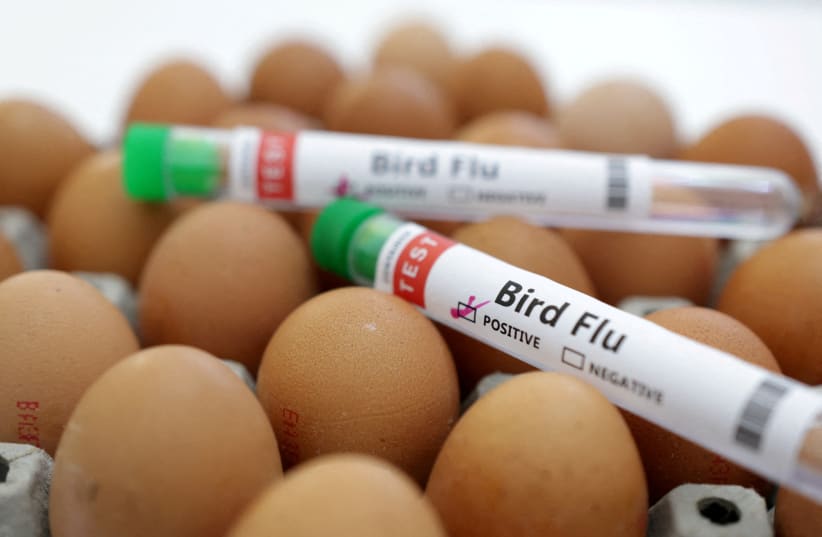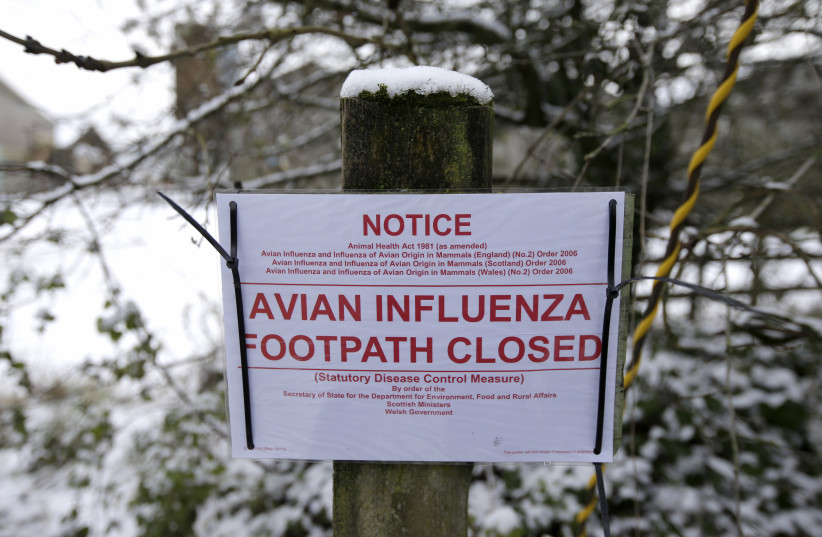A variant of the H5N1 subtype of bird flu that infected mink in October 2022 has shown some ability to transmit between ferrets through the air, albeit inefficiently, according to a new study published on Wednesday.
The study, published in the peer-reviewed journal Nature Communications, was conducted by researchers from Pennsylvania State University and Emory University School of Medicine.
In October 2022, the bird flu spread through a mink farm in Spain, causing severe illness in the mink. The virus appeared to spread between the mink and not just between birds and mink.
To test the possible risk to humans, the researchers generated a virus sample identical to the one that infected the mink using reverse genetics. The virus had several mutations, including one known to help adaptation to mammals (T271A) and several others whose function is still unknown.
The researchers then infected 12 ferrets with the virus sample. Each infected ferret was paired up with an uninfected ferret, with four of the ferrets put in direct contact with each other and eight others put in special cages that prevent the two from having direct contact while keeping them in a shared airspace. The airborne part of the study was conducted in two phases, with four infected ferrets in each phase.
Three of the eight uninfected ferrets placed in the special cages with a shared airspace with infected ferrets became infected by the virus: two in the first run of the study and one in the second run, meaning the airborne transmission efficiency of the virus was 37.5%.
The scientists noted that in each run of the airborne part of the study, they used two pairs of male and female ferrets and that all of the uninfected ferrets that became infected through airborne transmission were males.
The researchers also conducted a parallel run of the study with a sample of the virus without the T271A mutation, finding that a lack of the mutation created a virus that was less deadly and less capable of airborne transmission.
Ferrets are seen as an important animal model for analyzing how viruses could affect humans as they can be infected by human influenza viruses and exhibit similar symptoms to humans.
Troy Sutton, associate professor of veterinary and biomedical sciences, Penn State, and corresponding author on the paper, explained that while there is still no evidence that the strain of H5N1 currently spreading on dairy farms is capable of airborne transmission, the study shows that another variant of this virus has some capability of airborne transmission.
"This finding underscores the importance of continued surveillance to monitor the evolution of these viruses and their spillover into other mammals, including humans," said Sutton in a press release.
The researchers also noted that the virus sample has a transmission rate lower than what's typical for pandemic flu viruses, although it does have a better transmission rate than older strains of H5N1.
The researchers pointed out as well that the ferrets studied had no exposure to any other flu viruses, while most humans have had some exposure to other flu viruses, meaning humans may have some cross-protection for H5N1 from other viruses.
The scientists warned that the fact that they had found evidence of both direct contact and airborne transmission indicates that the H5N1 virus poses a "significant pandemic threat."
Last week, CDC researchers infected several ferrets with the virus found in the person infected in Texas in order to study the virus. The researches will assess the severity of illness and transmissibility of the virus in different scenarios in the ferrets, with results from the studies expected in about three weeks.
Last year, a pre-print study by Canadian researchers found that the H5N1 subtype could effectively transmit between ferrets, causing deadly illness.
Bird flu spreading in birds, mammals, outbreaks continue in cows
The studies come as the H5N1 subtype of avian influenza continues to spread in both birds and mammals around the world.
In the US, the virus has been spreading in cattle herds across the country in recent months, with 49 cases reported in nine states since March 25.
Last month, a person who had exposure to infected cows in Texas was found to be infected with the H5N1 subtype, with conjunctivitis being their only symptom. The infected person was treated with a flu antiviral drug and recovered.
While that person remains the only confirmed case of infection among dairy workers, health officials have expressed concerns that there may be more farm workers infected who aren't getting tested.
A preprint study published by researchers from Denmark and the US earlier this month found that cows share some flu receptors with humans and birds. The researchers warned that this could allow cows to act as a "mixing vessel" for new flu viruses that could spread between more species, including humans.
Another study from earlier this month found that swine are highly susceptible to infection by a variant of H5N1 that infected mink in October 2022, but have not transmitted the virus yet. Swine are seen as a possible "mixing vessel" in which flu viruses can acquire adaptations to spread among humans. The viruses the swine were infected with gained several mutations that help with adaptation among mammals, deepening concerns about how swine could help the virus spread better among mammals, including humans.
Since 2021, Europe and the Americas have been suffering from a nearly continuous outbreak of H5N1 avian influenza, which has been described as "the largest-ever" on the three continents. The virus has affected tens of millions of birds and thousands of mammals worldwide. Outbreaks of the virus have also become more common in Africa and Asia in the past year and have even spread to Antarctica in recent months.
The World Organization for Animal Health (WOAH) noted in March that, while estimates vary, about 485 bird species and 37 mammal species have been infected with avian influenza since 2021. Only the Pacific Islands, Australia, and New Zealand have been spared from the virus.

